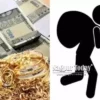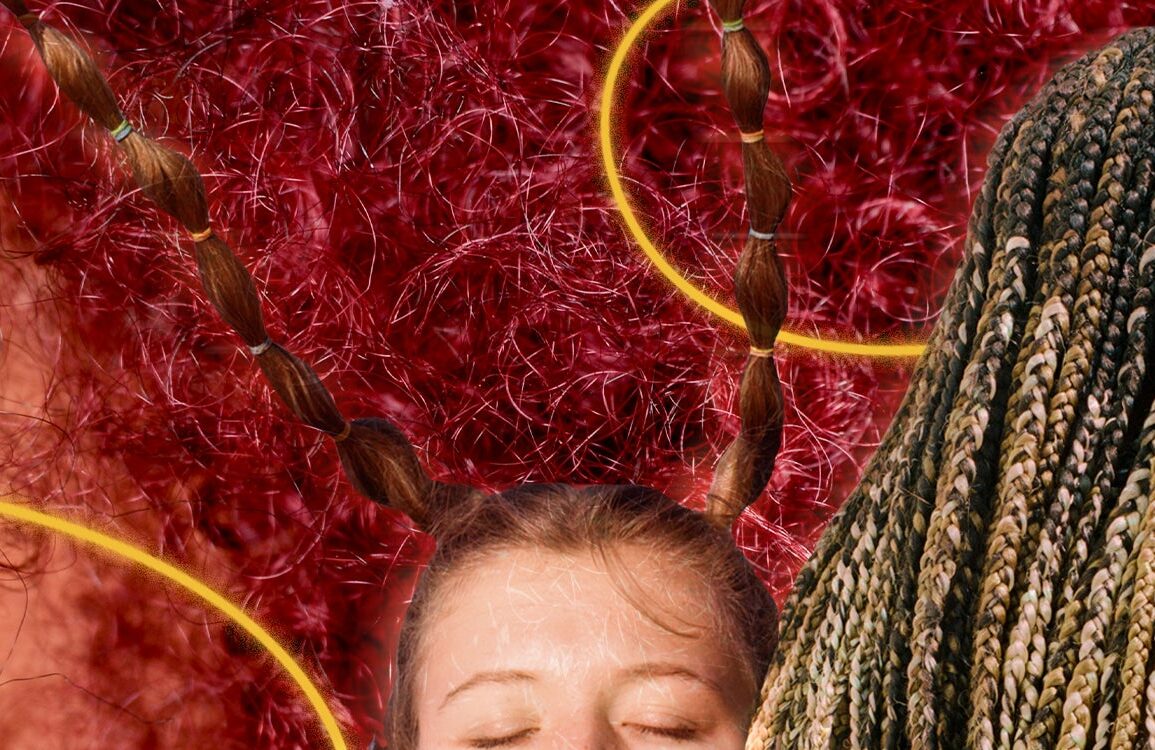
As a Black beauty journalist, part of my job is to source photos for my stories from stock photography companies like Getty and Shutterstock, social media platforms like TikTok and Instagram, and visual search engines like Pinterest and Google. I enjoy adding imagery that enhances the story — but searching for images of Black and Brown people can, at times, be highly time-consuming, as they are few and far between.
When searching phrases like “braids,” “weave”, or “summer hairstyles,” nearly all images on the first 10 to 15 pages are of white women (or, in the case of weaves, bunches of yarn). It leaves me uncomfortable, thinking, Why are Black people buried deep among images of white people? Over the years, I’ve picked up hacks like adding “afro hair,” “textured hair,” or “Black woman” to search terms — another unnecessary step I, and many, many others, shouldn’t have to take. “Black people are accustomed to being unseen,” the Senegalese artist Linda Dounia Rebeiz wrote in an introduction to her exhibition “In/Visible,” for Feral File, an NFT marketplace. “When we are seen, we are accustomed to being misrepresented.”
Visual experiences come with growing frustrations when, too often, the media shows white faces and thin bodies — leaning into the belief that straight hair, petite frames, and fair skin are superior and anything outside this confined style should conform. So what do you do if you don’t fall into these narrow categories? For a long time, there wasn’t an answer. With a rise in demands for proper representation on the Internet, the industry has been forced to question outdated systems and the people who designed said systems. How that is impacting haircare is that mega companies like Pinterest and Google have leaned into artificial intelligence (AI) and augmented reality (AR) to try to create a more inclusive online space in a bid to make the experience seamless and inclusive. It then begs the question: with more and more companies partnering with BIPOC leaders, are AI and AR on the route to becoming woke?
Through its 2021 Hair Pattern search function, Pinterest allows you to filter your results through six different hair types: protective, straight, wavy, curly, coily, bald, and shaved — that way, you only see inspo images specific to your texture or curl pattern. To design this feature, Pinterest’s Head of Inclusive Product, Annie Ta, worked with BIPOC creators, including celebrity hairstylist Naeemah LaFond, stylist Yara Shahidi, Tracee Ellis Ross, and many others, to make technology and social media more visually inclusive. “In order to build for the most marginalized groups, we need to build and design alongside them,” Ta said recently.
With the help of “computer vision-powered object detection,” (which identifies objects in an image or video) the platform can distinguish which hair types are shown in hairstyle pins. According to the company, its algorithm can pinpoint hair patterns in over a billion images, up from the 500 million it started with two years ago. Because of this, Pinterest says that the search for textured hair has increased by 41% since last year.
More recently, Google updated its AR features last month to include a try-on hair color option. Now, when shopping for at-home hair color, all users, regardless of skin color, can see the different shades from L’Oréal brands on the site. According to Lilian Rincon, senior director of shopping product at Google, “The tool allows people to try on over 400 shades without having to switch between brand or store sites.”
The innovations led by Google and Pinterest suggest that search engines are working toward a more inclusive online space, but it’s important to realize that algorithms can only do what they are told. The data that drives them and the coding rules that go into them originate from humans. In other words, any biases of the person programming the algorithm will reflect how it behaves. For too long, the Internet has been promoting narrow, homogenous, white stories. These stories convey one idea: if you don’t look exactly like this, you don’t belong.
Pinterest and Google are working to change that and create a space where all belong, and have recruited BIPOC members to help collaborate and illustrate an accurate lived experience to craft these AI and AR features better. By working with BIPOC individuals who can instruct what data points it should target, you mitigate the risks of bias by building algorithms with diversity in mind.
But is that how actual users view it? “In the past when looking for hairstyles on Pinterest, I had to be very specific about the keywords like ‘Black short natural hairstyles’ I put into the search bar,” Alexis Drain, a Seattle-based researcher shares. “A lot of the time, I’d have to play around with keywords to get the most accurate results. But now, with the AI filters, it makes it much easier to find inspiration, and it is more accurate.”
For Alicia Bella, an LA-based actress, technological innovations still have a long way to go. “I used the new Pinterest tool when I was trying to decide what I wanted in a haircut,” she told Refinery29. “It was slightly helpful, but it still missed the mark. Being mixed makes it difficult.” Bella says that the results were not specific enough. “A lot of generic photos came up in the scrolling process. It still feels basic, with limited parameters.” Although Bella uses the service, it hasn’t changed how she shops for products. “I still ask around for personal recommendations — but in terms of AI, I just want more options in my search engine that relate to me,” she says.
Unfortunately, the space hasn’t included BIPOC individuals for so long that several Black and brown people I spoke to were not aware that these features existed. They report feeling frustrated with previous searches, and as such, they have no interest in using these new tools. “Textured hair is significantly more diverse and complex than straight hair, making the process of product discovery extremely frustrating, confusing, and overwhelming,” shares Winnie Awa, co-founder of Carra, a UK-based personalization and consumer intelligence platform taking the guesswork out of textured hair care. It appears that gaining the trust and attention of BIPOC individuals could require a lot more data points, features, and attention to detail. “One of the biggest shortcomings of AI, is the unawareness of different realities for certain communities,” shared Soraya Hausl, co-founder and chief data scientist at Carra.
Of course, it is a long journey ahead to reach total inclusivity. Hausl and Awa believe there is a great responsibility that comes with automating a specific process. “It’s so important to have diverse representation or consult other expert agencies if unavailable in-house. It prevents biases and helps develop for more marginalized communities,” Hausl continued. “But it’s not just about preventing biases. It’s about capturing opportunities as well to further problem-solve for these communities.”
Although securing diverse programmers and experts is a necessary step in furthering AI, Hausl argues that financial backing is just as important: “AI in haircare is still relatively new compared to other domains, and we are yet to see a wide range of applications or funded opportunities that enable the work and research to advance the field on a larger scale,” Hausl highlights.
Like the tech members at all three corporations, I want to be optimistic that these technological innovations will cause a ripple effect for the industry. I hope that it stirs up a growing awareness and sensitivity to the experiences of those who previously had to bend to the norms. This display of diversity cannot just be a shooting star moment: To have lasting change, we need people in power (often white, privileged men who run online spaces) to link up and hire people within BIPOC communities to better develop and discover needed features to improve inclusivity.
Too often, when we — Black people and people of color — get a seat at the table, we’re expected to be content and satisfied with the long-delayed welcome. Through increased technology development and partnering with BIPOC experts to build out this technology, it’s good to see that large companies are displaying on a global, digital scale that “content” is not what we’re after. Victory doesn’t necessarily mean the entire online world is now magically visually inclusive. Instead, victory in the disruption of AI and AR features is a forward movement for marginalized communities — a step to, hopefully, becoming woke.
This post was originally published on this site be sure to check out more of their content.








